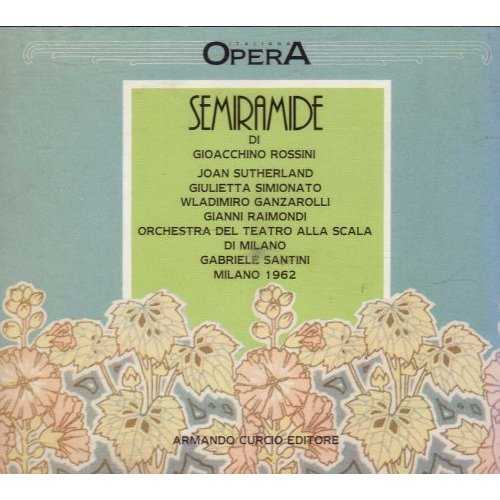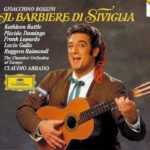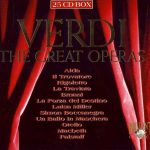
Audio CD
Number of Discs: 2
Format: APE (image+cue)
Label: Italiana Opera
Size: 552 MB
Recovery: +3%
Scan: yes
Semiramide – Joan Sutherland
Arsace – Giulietta Simionato
Assur – Wladimiro Ganzarolli
Idreno – Gianni Raimondi
Oroe – Ferruccio Mazzoli
Mitrane – Giuseppe Bertinazzo
Azema – Manuela Bianchi Porro
L’ombra di Nino – Antonio Zerbini
Orchestra e coro del Teatro alla Scala
Gabriele Santini
Milano, Teatro alla Scala, 17 December 1962
CD 01
01. Ouvertüre
02. Suoni Festevoli, Mistici Cori
03. Sí, Sperate, Sì, Esultate
04. Regina, Allára E Giura
05. O Tu De´magi Venerabil Capo
06. Eccomi Alfine In Babilonia
07. Ah! Quel Giorno Ognor Rammento
08. Io T´attendeva, Arsace…
09. Bella Imago Degli Dei
1o. Atto II – Serena I Vaghi Rai
11. Bel Raggio Lusinghier
12. Ma Chi Vegg´io?
13. Serbami Ognor Si Fido
14. Alle Più Care Immagini
15. I Vostri Voti Omai
CD 02
01. L´alto Eroe, dell´Assiria
02. Qual Mesto Gemito
03. D´un Semidio Che Adoro
04. Atto III – Alla Reggia D´intorno
05. Se La Vita Ancor T´è Cara
06. Quella Ricordati Notte Di Morte
07. Ma Implacabile Di Nino Non È L´ombra
08. Ebben, Compiasi Omai
09. Su, Ti Scuoti, Rammenta Chi Sei
10. No, Non Ti Lascio
11. Ebbene…A Te, Ferisci
12. Giorno D´orrore!
13. Atto IV – Il Dì Già Cade
14. Sì, Sì Sarà Vendetta
15. Ah! Signore!…Assur!
16. Un Traditor Con Empio Ardir
Qual Densa Notte!
Al Mio Pregar T´arrendi
Dei! Qual Sospiro!
Semiramide/Sutherland & Horne
Rossini: SemiramideHow does one compare Callas, Sills and Sutherland? It is completely subjective! I never saw Callas live, but I did see Sills at The Ravinia Festival (Chicago) and Sutherland & Horne in Boston in Norma. I also saw June Anderson at the Met (NY) and Sutherland & Horne at The Lyric Opera (Chicago) in Semiramide. Semiramide was written in 1823 and Norma was written in 1831. Both roles were written during the Bel Canto Era when there was no distinction between soprano and mezzo soprano as proven by Guidita Pasta & Maria Malibran (sisters). Sutherland sang Brangaine in Tristan & Isolde (Wagnerian mezzo – G below middle C) and the Konigin der Nacht in Die Zauberflote (high soprano – F above high C): she was able to carry the dramatic weight through the full range. In the 1950’s she sang these two roles within a week of each other; that is a near 3 octave range. You can see I am a defender of Sutherland. I admit she lost the E & F in alt at the end of her career. The full body of Sutherland’s work is enormous and she spanned 3 decades (1959-1990) at the top of the heap. I enjoy Callas & Sills, but they don’t compete with Sutherland in my subjective opinion. Sutherland’s pitch is near perfect; her runs, trills & stacatti are thrilling. I realize she was dished for her diction, but when you sing in the clouds, how do you enunciate properly; she chose to not compromise the vocal line for great diction, thank God. She created the revival of operas by Handel, Meyerbeer & von Weber and debuted operas by Gossens & Tippet the in 1940’s-1980’s. She was very lucky in that she was married to her prime vocal coach & conductor, Richard Bongyne. I finish by saying there will never be another Callas, Sills or Sutherland; each was unique. All 3 are now dead, but there is a great recorded body of work for each.



